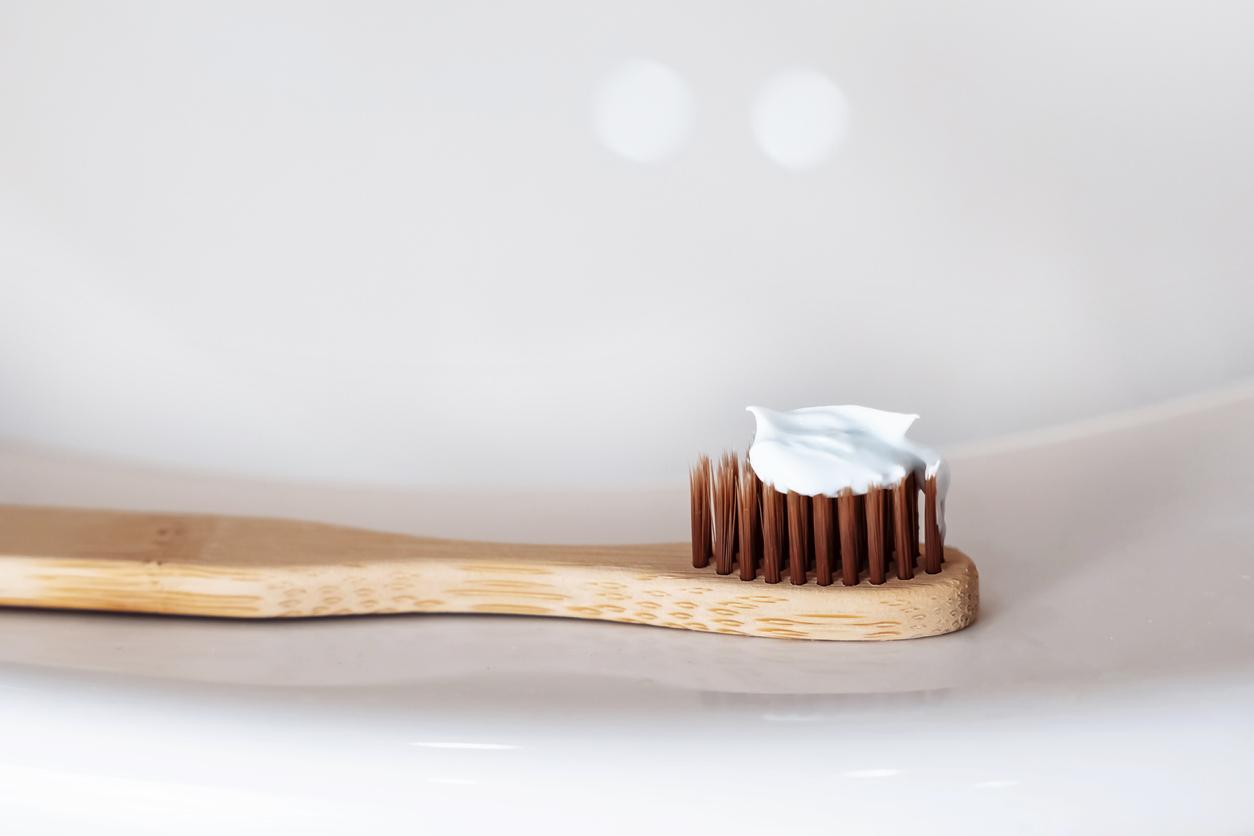In fact, “whitening” toothpastes do not whiten: they restore radiance to the smile. Mechanically improving plaque removal and reducing stains. Cleaned teeth are “polished”, reflect light better and appear brighter. As for toothpastes with “optical effect”, they contain blue pigments (to color the teeth) or red (to bring out the color of the gum). By increasing the contrasts, they give the impression that the teeth are lighter. The result is then a trompe-l’oeil.
What is a good whitening toothpaste?
All toothpastes are good toothpastes because they must comply with ISO 11609, which limits their abrasive power. The RDA (relativ dentin abrasivity), index of abrasiveness of dental paste, must be located below 250. It is between 80 and 250. “But it is not mentioned on the packaging , specifies Dr Paul Cattaneo, referent dentist with the French Dental Association. You have to trust the mentions given by the manufacturers. ”
All toothpastes are slightly lightening. Thus, hydrated silica is present in many dental pastes. In a conventional toothpaste, it is ground until the grains reach a diameter of 8 microns. In whitening formulas, the grain diameter is generally 10 microns for a superior abrasive effect.
What are their flagship ingredients?
These are abrasive elements (silica, calcium carbonate, etc.), products which, mechanically and chemically, promote the removal of stains (baking soda, etc.), polishing agents (perlite) , sodium hexametaphosphate, which prevents the accumulation of biofilm (dental plaque), titanium dioxide, an opacifying pigment. Some also contain low-dose hydrogen peroxide (brightening) or other active ingredients such as, for example, “pearlescent agents” supposed to make the tooth brighter. They can be combined with a plaque developer. Little used in France, they optimize brushing.
Can we use them every day?
Since the introduction of the ISO standard in 1998, it has been considered that it can be used without risk on a daily basis. Certain conditions are nevertheless required: having a suitable brushing (gentle movements), a suitable brush that is to say flexible (never hard bristles). “Regular use of a whitening toothpaste helps reduce the appearance of stains and helps your teeth appear whiter,” adds Dr Cattaneo.
How long does it take?
The whitening effect is immediate for optical toothpastes. For abrasive pastes, you have to wait a fortnight to really see the result.
What about whitening powders?
“Avoid them! “, advises Dr. Cattaneo, they can be very aggressive and promote dental hypersensitivity. The baking powder sold in pharmacies is also to be used with caution. We avoid the toothbrush and put it on the finger, then we massage gently, or we use a gingival stimulator, a kind of small silicone tip. This allows stains to be removed without scratching the enamel. You should also be wary of homemade toothpastes made from charcoal or clay. And don’t brush your teeth with lemon juice! The grain size (abrasive effect likely to weaken the tooth) of these products is important.
Which toothbrush to choose doctor?
“For those who like manual toothbrushes, I recommend Inava from Pierre Fabre,” says a dentist, specializing in aesthetics. There are also excellent ones from a Swiss manufacturer (Curaprox), whose bristles are very soft and very effective. Of course, the Rolls of brushing is the electric brush. The basic product, Oral B, is good value for money. I recommend Philips Sonicare: the bristles are flexible, the vibrations soft, you don’t feel them and yet, it explodes the plaque. It is good to associate with brushing, dental floss and the gingival stimulator (silicone tip). With good hygiene and brushing, bleaching lasts longer. ”
|
Our selection of whitening toothpastes 1. Fluorinated: With hydrated silica for its abrasive properties, tetrasodium pyrophosphate to control tartar, this toothpaste also contains a high level of fluorine (1450 ppm). 2. Cleaner: Non-abrasive, it contains chlorhexidine (to remove plaque) and micro-sprayed bicarbonate particles for gentle polishing of teeth and deep stain cleaning. 3. Soft : Not very abrasive, this toothpaste is suitable for sensitive teeth. It is enriched with potassium nitrate, an agent that penetrates inside the tooth and creates soothing protection for the nerve. 4. Natural : A benchmark in terms of active ingredients of natural origin! This toothpaste contains in particular organic white tea, bicarbonate, sage, mint and hydrated silica. It is also enriched with fluorine. 5. Immediate optical effect: All toothpastes of this brand optimize the color of the teeth. This contains active oxygen, which whitens, and liquid calcium (Replenium), which restores the surface of the enamel. |
For further
4 tips for having white teeth
What is a good whitening toothpaste?
















